Abstract
The aim of this research was to target television professionals in the state, and the private sector to develop their professional capabilities to address gender issues, and to portray women in an affirmative manner in the media. Research literature of the past indicated that women were paid 30% less than men: That they experienced an invisible barrier, the “glass ceiling effect": That organizations headed by women were less corrupt and more efficient. The present research focused on these issues in Pakistani organizations. Imperial College of Business Studies Lahore was assigned the research by United Nation Development Programme, to see if those variables were operative in Pakistani organizations. The specific research objectives were: 1. Identification and quantification of leadership qualities in a given leader in a Pakistani organization. 2. Operationalization and measurement of "glass ceiling effect" as it operates in the selected Pakistani organizations. 3. Operationalization of "honesty", "transparency" and "diligence", and the quantification of these attributes, as they operate in a given organization. 4. Identification and evaluation of relevant organizational records to corroborate the research results. Three organizations were selected for the purpose of the present research. They included “A”, “B” and “C”. A set of six measuring instruments were developed, the instruments included (i) a measure of glass ceiling effect (ii) a rating scale to assess leadership qualities (iii) a measure to assess the achievement of organizational and departmental goals, (iv) a measure each of (a) transparency (b) diligence, and (c) honesty. All the instruments pertaining to transparency, honesty and diligence were meant to measure those attributes which were within the rules and parameters of a given organization, such that the respondents were to judge the incidence of those variables within the framework and definition of the organizations’ standard, and not in view of some external benchmark. The research results indicated that women leaders in Pakistani organizations were preferred over men leaders. The research also indicated that women employees felt the glass ceiling effect in their respective organizations. The result indicated that all three explored organizations were perceived by their employees to be honest, transparent and having diligence. The rating given to “C” for those variables by its workers was the highest, followed by the ratings given to “B” by its workers and that followed by ratings given to “A” by its workers. Those results of the probes were double-checked with relevant organizational records and it showed that the reported opinions of workers corresponded with records maintained by those organizations. The research also explored whether the stated organizational and departmental goals were met or not. It was found that they were met in all organizations. In view of the obtained results it was suggested that glass ceiling effect was a major hindrance in the upward mobility of females in Pakistani organizations. Steps for removal of the effect were required. It was recommended that discriminatory policies and practices must be changed. It was also recommended that the media must sensitize people about the real impact of glass ceiling effect, and invite experts to suggest remedies to counteract it. It was recommended that steps be taken to remove barriers for the emergence of more women leaders in Pakistani organizations.
Keywords
Gender issues, Glass ceiling effect, Leadership
DOI
https://doi.org/10.54784/1990-6587.1257
Creative Commons License

This work is licensed under a Creative Commons Attribution 4.0 International License.
Recommended Citation
Hashmi, H. (2010). The impact of women leaders upon organizational performance. Business Review, 5(1), 51-78. Retrieved from https://doi.org/10.54784/1990-6587.1257
Published Online
March 05, 2021
Included in
Business Administration, Management, and Operations Commons, Organizational Behavior and Theory Commons
Publication Stage
Published








